Ditapis dengan
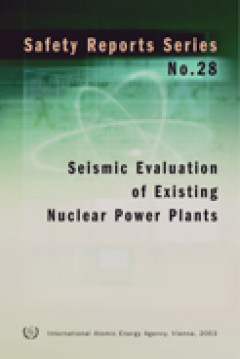
Seismic Evaluation of Existing Nuclear Power Plants | Safety Reports Series N…
This report provides guidance for conducting seismic safety evaluation programmes for existing nuclear power plants in a manner consistent with internationally recognized practice. It will be useful for regulatory organizations and other organizations responsible for the implementation of seismic safety evaluation programmes.
- Edisi
- 28
- ISBN/ISSN
- 92-0-101803-7
- Deskripsi Fisik
- 60 p ; 480 KB
- Judul Seri
- -
- No. Panggil
- 621.483 IAE S
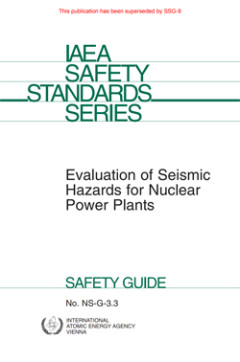
Evaluation of Seismic Hazards for Nuclear Power Plants | IAEA Safety Standard…
This Safety Guide provides guidelines and recommends procedures for the evaluation of seismic hazards for nuclear power plants. Specifically, it provides recommendations on how to determine the ground motion hazards for a plant at a particular site and the potential for surface faulting, which could affect the feasibility of construction and safe operation of a plant at that site.
- Edisi
- NS-G-3.3
- ISBN/ISSN
- 92-0-117302-4
- Deskripsi Fisik
- 31p;276kb
- Judul Seri
- -
- No. Panggil
- 621.483 IAE E
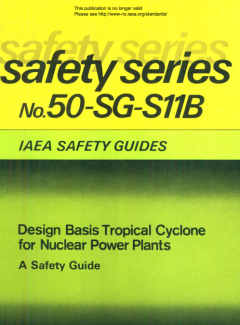
Design Basic Tropical Cyclcne for Nuclear Power Plants | Safety Series No. 50…
The distribution and estimation of heavy rains in tropical cyclones and their effects on flooding are, however, not discussed, since these aspects are considered in the IAEA Safety Guides 50-SG-S10A, 50-SG-S10B and 50-SG-S 11 A.
- Edisi
- -
- ISBN/ISSN
- -
- Deskripsi Fisik
- 72p
- Judul Seri
- -
- No. Panggil
- 621.483 IAE D
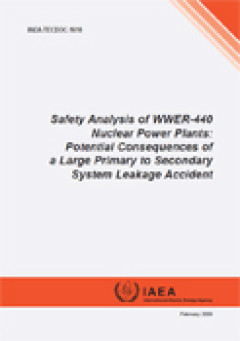
Safety Analysis of WWER-440 Nuclear Power Plants: Potential Consequences of a…
This report is a guide for designers, operators and regulatory bodies responsible for evaluating the potential consequences of a large primary to secondary leakage accident in WWER-440 reactors. Specific attention is paid to the modelling of such an accident and to resulting safety issues.
- Edisi
- 1610
- ISBN/ISSN
- 978-92-0-100709-4
- Deskripsi Fisik
- 48p, 1,24 MB
- Judul Seri
- -
- No. Panggil
- 621.483 IAE S

Decommissioning of Nuclear Power Plants and Research Reactors | IAEA Safety S…
This Safety Guide addresses the subject of how to meet the requirements for decommissioning of nuclear power plants and research reactors. It provides guidance to national authorities and operating organizations on the planning and safe management of the decommissioning of such installations.
- Edisi
- WS-G-2.1
- ISBN/ISSN
- 92-0-102599-8
- Deskripsi Fisik
- 41p; 161kb
- Judul Seri
- -
- No. Panggil
- 621.483 IAE D
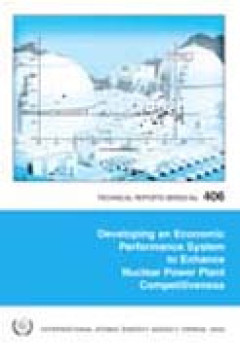
Developing an Economic Performance System to Enhance Nuclear Power Plant Comp…
This report discusses the means and principal issues for the development of a nuclear economic performance international system, with the purpose of enhancing nuclear power plant competitiveness. It addresses the major transformations occurring in the electricity generation industry to achieve operation and maintenance (O&M) cost reductions and is therefore primarily intended for nuclear power …
- Edisi
- 406
- ISBN/ISSN
- 92-0-110202-X
- Deskripsi Fisik
- 82p, 496kb
- Judul Seri
- -
- No. Panggil
- 621.483 IAE D

Master Curve Approach to Monitor Fracture Toughness of Reactor Pressure Vesse…
This publication provides information about the master curve approach for assessing the structural integrity of reactor pressure vessels (RPVs) under current and future operation and accident conditions in nuclear power plants (NPPs). This direct measurement of fracture toughness approach is technically superior to the correlative and indirect methods used in the past to assess irradiated RPV i…
- Edisi
- 1631
- ISBN/ISSN
- 978-92-0-111009-1
- Deskripsi Fisik
- 180p, 2,97MB
- Judul Seri
- -
- No. Panggil
- 621.483 IAE M
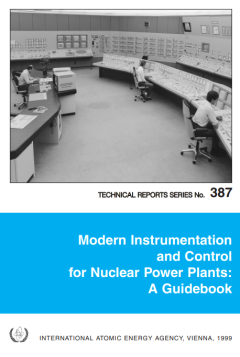
Modern Instrumentation and Control for Nuclear Power Plants | Technical Repor…
This report replaces Technical Reports Series No. 239, Nuclear Power Plant Instrumentation and Control: A Guidebook (1984), in particular by changing the emphasis from guidance to summarizing operating experience and discussing new technologies. It provides an up to date overview of nuclear power plant instrumentation and control technology and the background against which such systems are impl…
- Edisi
- 387
- ISBN/ISSN
- 92-0-101199-7
- Deskripsi Fisik
- 629p,
- Judul Seri
- -
- No. Panggil
- 621.483 IAE M
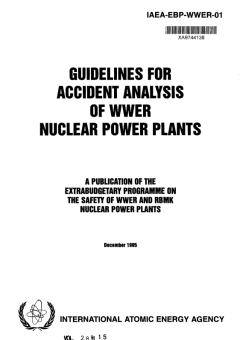
Guidelines for accident analysis of WWER nuclear power plants
The need for detailed guidance in the performance and review of accident analysis for WWER nuclear power plants has been identified as a priority within the IAEA Extrabudgetary Programme on Safety of WWER and RBMK NPPs. The present guidelines were developed through the organization of three consultants meetings in 1994 and 1995. The guidelines deal with the transient and accident analysis re…
- Edisi
- -
- ISBN/ISSN
- -
- Deskripsi Fisik
- 136p
- Judul Seri
- -
- No. Panggil
- 621.4835 IAE G

Optimized Nuclear Plan: Feasibility Study For The First Nuclear Power Plant I…
- Edisi
- Vol.1
- ISBN/ISSN
- -
- Deskripsi Fisik
- 87 hal, 24 cm
- Judul Seri
- -
- No. Panggil
- 621.483 BAT O
- Edisi
- Vol.1
- ISBN/ISSN
- -
- Deskripsi Fisik
- 87 hal, 24 cm
- Judul Seri
- -
- No. Panggil
- 621.483 BAT O
 Karya Umum
Karya Umum  Filsafat
Filsafat  Agama
Agama  Ilmu-ilmu Sosial
Ilmu-ilmu Sosial  Bahasa
Bahasa  Ilmu-ilmu Murni
Ilmu-ilmu Murni  Ilmu-ilmu Terapan
Ilmu-ilmu Terapan  Kesenian, Hiburan, dan Olahraga
Kesenian, Hiburan, dan Olahraga  Kesusastraan
Kesusastraan  Geografi dan Sejarah
Geografi dan Sejarah